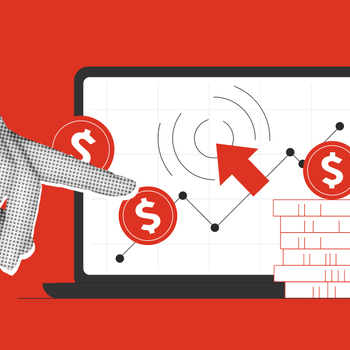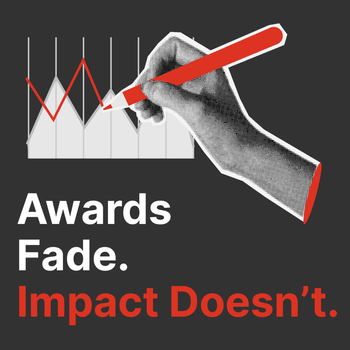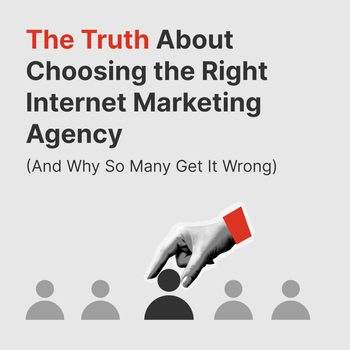The Power of Law Firm Internet Marketing
by Cydney Hatch • March 16, 2018
“The power of the lawyer is in the uncertainty of the law.” – Jeremy Bentham
You know, you and I are not that different… lawyers and marketers… because just as law is uncertain, so is internet marketing.
We are the controllers and appliers of the principles, skills and knowledge to make something uncertain work for people’s benefit: the law and the internet.
And who said attorneys were not relatable! Ha!

So, as we look at the uncertainties of our two worlds, how can we help each other? I know there is a lot of intimidating legal jargon and proccesses that I am not well versed but online marketing can also be a intimidating place to navigate with many lingo terms and platforms to master!
In this article, I will help you harness the power of law firm internet marketing and how the basics can set your practice up for digital success!
Law Firm Internet Marketing Channels: Search, Social and Display
Law firm internet marketing can be broken up into three main channels: search, social and display!
Paid Search
Search advertising, also known as paid search and search engine marketing (SEM), are online ads that appear in search engine results on platforms like Google AdWords or Bing Ads.
So, whenever a person uses a major search engine to look up a certain product or service, search advertisements are the ones that will be appear in the top areas of your Google or Bing search.
For example, if I wanted to look up “Family Law Firm” in Google this would be my result:
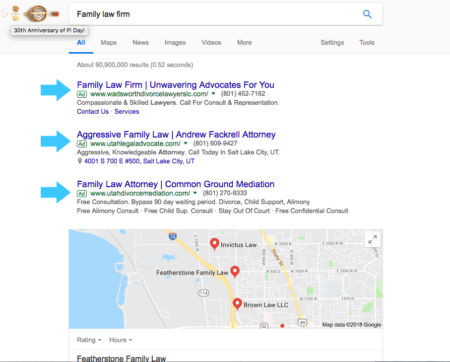
This is what the same search would get me on Bing:
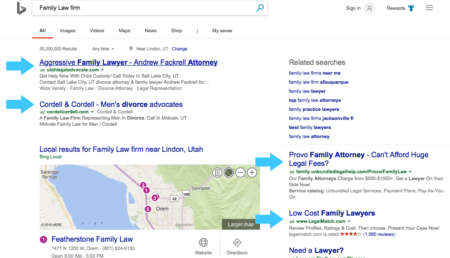
As you can see with the blue arrows, paid search advertising is solely focused on intent-based results! You are marketing with the intent to purchase resources, services and products.
So in the example above, my needs for a family lawyer would be easily found and easily accessible locationally!
This is a great way to advertise because you’re giving the potential customer services they want! This leads to high conversion rates and value.
So how do you pay for search advertising?
Paid search advertising uses a pay-per-click (PPC) advertising model, which means that every time your ad is clicked you pay the search engine for that traffic.
Paid Social
Social advertising or paid social ads are advertisements that appear on social media platforms. Social media platforms like Twitter, Facebook and Instagram are paid to promote a firms or services through boosted posts, offers and promotions.
Social ads help you target potential customers by personal, professional, demographic and behavioral parameters which allow you to reach the people who are most relevant instead of just buyer intent!
An example of this would be a sponsored Facebook post that is used to increase the posts presence or a Instagram advertisement:
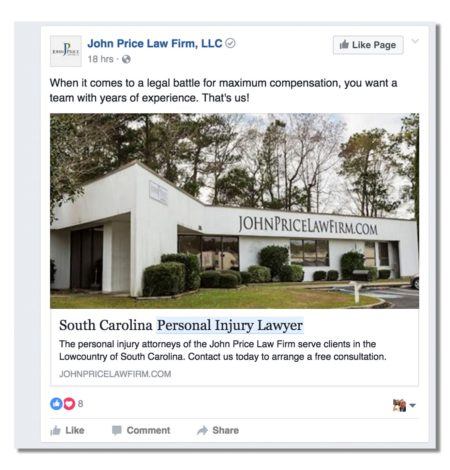
Using paid social advertisements, you are able to use effective targeting, call to action buttons, useful tracking and analytics to see fast results in relevant platforms everyone uses daily!
Display Advertising
Display ads are the ad boxes that are on the tops or sides of a website. They can be a traditional banner ads or even videos. These types of ads appear on sections reserved for paid advertising and are aimed at generating call to action.
For example, many news websites are full of video ads and clickable banner ads that are even that much more aggressive making you watch five seconds of a video before you can get into the content you came for.
On Law.com you can see that Lexis Nexis, a content database website, is display advertising!
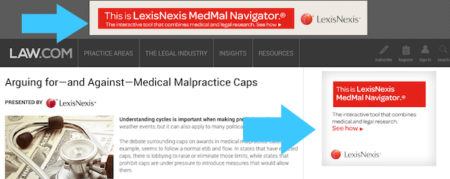
Display advertisements are effective as they have a wide spread across millions of websites reached by Google’s Display Networks. These search engines share your ads to websites and apps based on keywords targeting preferences. (hopefully your keywords are more complex than just lawyer or attorney)
Display advertising is a lot like a digital billboard and there are a couple of ways to pay for it:
1. Cost per thousand impressions (CPM)
With this model, you pay to have your ad load in front of people a certain number of times. Every time your ad loads, it makes an impression, so paying for impressions is called a cost per impression advertising model. Since display ad impressions rarely lead to clicks and conversions, most advertising platforms charge a cost-per-thousand-impressions (CPM).
Fixed cost
Fixed cost is when you set a specific amount you are willing to pay for your ad to be displayed for a period of time, regardless of engagement. Usually these are created through network partners who will run your ads across a range of websites, based on your targeting.
Paid Search, Social and Display: The Perfect Combination
To progress in this digital age you need to balance search, social and display ads to maximize your legal marketing efforts. All will bring strong and unique elements to your strategy for a more holistic approach.
Now, to dive in deeper into using these platforms, I wanted to break down some of the campaign elements you will find in search, social and display.
Law Firm Internet Marketing: Campaign Elements
In addition to the three main law firm internet marketing channels we discussed above, there are several key campaign elements you’ll want to get right as you start advertising online.
Landing Pages
Landing pages are web pages that a person is taken to after clicking an ad. Landing pages are separate from your website and are designed to only receive campaign traffic.
Now, these might be confused with a website homepage but do not make the mistake of linking a law firm internet marketing campaign to your homepage! Recent legal marketing research shows that on lawyer landing pages, there’s no room for error. The most expensive PPC keywords are related to law, with one costing as high as $935 per click.
With so much riding on a first impression, make sure you are crafting relevant, direct and clear landing pages to get your desired results.
So, for example, Contreras Law Firm has a specific landing page outside of their website that asks for a potential clients information and needs for a personal divorce lawyer.
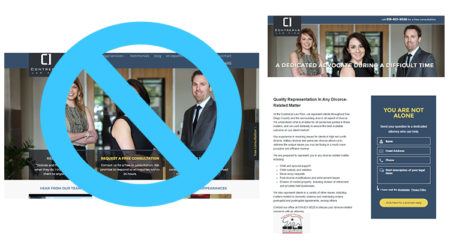 Your landing pages are designed for one purpose only: results! These results can be making a purchase, getting contact info from potential clients or downloading a piece of content for future leads.
Your landing pages are designed for one purpose only: results! These results can be making a purchase, getting contact info from potential clients or downloading a piece of content for future leads.
Sponsored Content
Many advertisers choose to utilize sponsored content as a way to boost their exposure. Sponsored content can take many forms:
Native Advertising
Native advertising is paid content that is shared on a publication site that aligns with a business’s established style and provides the kind of information that the site’s audience wants.
For example, Forbes shared a articles talking about Instagram Influencers you should follow:
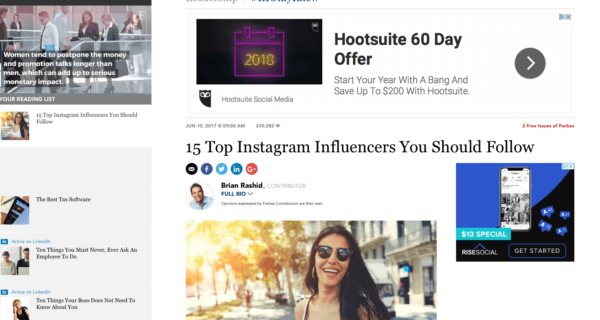
Does Forbes contain native advertising? Absolutely!
The page, obviously targeting Instagrammers, has ads portraying businesses that will help you build your social media following like RiseSocial and Hootsuite!
Social Media Boosted or Sponsored Content
Paid social media content is shared to your target audience based on parameters you set. Most social platforms have this feature, like Facebook’s Sponsored Postsand Twitter’s Sponsored Tweets.
Video Ads
Visuals, particularly videos, are the key to marketing success in today’s world. In fact, 25% of Instagram’s advertisements are now in video format with a click through rate of 1.84% (and that number is on the rise). Look around most website advertisements, many have video content!
Generally, video ads have become one of the best ways to grow a business or practice because people are consistently hungry for content. Videos give them engaging content that you can use to directly market to your potential clients in a concise way.
A video can be interviewing a partner on a current hot issue, an introduction to your firms services, or reviews from your past clients! Think outside the box!
Marketing Analytics
Advertising is not left to chance for magical success You should track how ads are performing and where their traffic is coming from. This is why analytics is an important part of internet advertising strategy.
Using marketing analytics, you can examine your audience demographics, impressions, click through rates, cost per conversion and many other trends over a set of time.
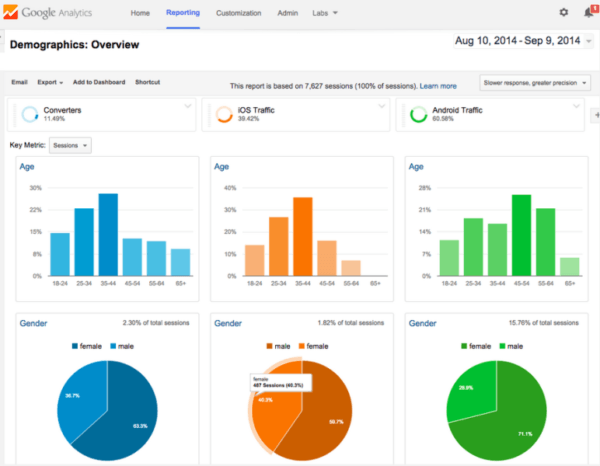
Using these insights, analytics and responses allows you to work smarter, not harder. This information helps you tweak future ads and marketing to be better. If something isn’t working, you can change it. If something is working, you can figure out how to continue advancing and promoting that idea—with more money and resources.
Email Marketing
Email marketing is when a business or firm will send some type of targeted email to a purchased lead list or a customer list. These emails can be newsletters, promotional emails, appreciations, or even content downloads.
For a lot of Legal practices, email marketing is not necessarily going to be key for generating new clients but for referrals which is indirect new clients from your client base.
Email marketing is the cheapest form of internet advertising as it is essentially free to complement other digital marketing efforts. All you usually have to pay for is some sort of email marketing service like MailChimp, Hubspot or Autopilot.
Remarketing
Ever browse through a website, click out the tab and later see ads featuring some of the items you were browsing? If so, you have been remarketed to!
Remarketing has become one of the most important tools in a digital marketer’s toolbox as it helps people move towards final purchasing.
Remarketing allows you to track users who have visited your website—without a purchase or action—and shares your ads on other websites. Think of this as the ultimate digital stalking, products will stay on your mind and follow you!
But don’t, worry we will not need to draft a restraining order just yet….

Remarking strategy increases brand awareness and usually helps with conversion!
Conclusion
The above basic strategies are key to consider when looking to expand your law firm internet marketing efforts.
Dive in, setup a legal marketing plan, get creative, build meaningful relationships, and enjoy the internet marketing of today! The opportunities and level for success are endless!
By the way, if you’d like help picking the right law firm internet marketing approach for your legal firm, let me know here or in the comments. I’d love to help!
What is your biggest concern when starting to market for your firm? What have you tried already to alleviate those concerns? Leave your thoughts in the comments as we would love to help!



